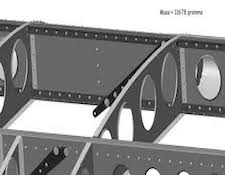It’s the time of year for saving money!
In 1887 Asa Candler started an advertising campaign for a new, Atlanta, GA based soda fountain concoction. Not so many years later the soft drink was known from one end of the country to the other. Soon enough, the name Coca Cola was known in every corner of the globe. Advertising has never quite been the same.
 High end audio’s obvious advertising goal is to entice someone to buy a product. Audiophile ads contain superlatives like “Best in Class,” “Ranked Number One,” “Best Sound,” and a host of other descriptions. Quotes from learned and noted reviewers are usually referenced. How can they ALL live up to the accolades? Could it be that this is just some marketing guy’s way of having fun? One description that pops up from time to time, and one that always makes me smile, is “made from aircraft grade aluminum.” Say that in your best radio announcer’s voice. When you read this in an ad you are supposed to be wowed and amazed. And impressed. And reach for the checkbook.
High end audio’s obvious advertising goal is to entice someone to buy a product. Audiophile ads contain superlatives like “Best in Class,” “Ranked Number One,” “Best Sound,” and a host of other descriptions. Quotes from learned and noted reviewers are usually referenced. How can they ALL live up to the accolades? Could it be that this is just some marketing guy’s way of having fun? One description that pops up from time to time, and one that always makes me smile, is “made from aircraft grade aluminum.” Say that in your best radio announcer’s voice. When you read this in an ad you are supposed to be wowed and amazed. And impressed. And reach for the checkbook.
Having sold aluminum that was machined, extruded and cast for almost thirty years, let me assure you that there is no such thing as aircraft grade aluminum, specifically, and in place of some other technical description. When an engineer is designing a part or a system for an aviation or aerospace application and they need an aluminum part, they do not ask a supplier for aircraft grade. Metallurgists, generally speaking, don’t look up material specifications under the heading “aircraft grade.”
 Aluminum is made from a variety of metals and that combination being made into an alloy. Each alloy satisfies certain mechanical properties. Shore Hardness, Tensile Strength, Elongation and Yield are among some of the determining factors of which alloy is used. Engineers choose an alloy based on its mechanical properties and the ability to satisfy their design. They don’t do so because of a colloquial name given to entice some higher level of acceptance. Probably the most common aluminum alloy made today and used in every imaginable application is called 6063. This alloy is comprised of a variety of metals including silicone, iron, copper, chromium and of course, aluminum.
Aluminum is made from a variety of metals and that combination being made into an alloy. Each alloy satisfies certain mechanical properties. Shore Hardness, Tensile Strength, Elongation and Yield are among some of the determining factors of which alloy is used. Engineers choose an alloy based on its mechanical properties and the ability to satisfy their design. They don’t do so because of a colloquial name given to entice some higher level of acceptance. Probably the most common aluminum alloy made today and used in every imaginable application is called 6063. This alloy is comprised of a variety of metals including silicone, iron, copper, chromium and of course, aluminum.
Several speaker manufacturers use aluminum extrusions for an internal frame for the speaker enclosure. Many component manufacturers use machined from aluminum billet for the front of their enclosure or even the enclosure itself. Two different applications but in all probability the majority of the alloys being used by all these manufacturers is 6063. It is basically the vanilla flavored aluminum alloy in today’s manufacturing world. To a lesser extent, a 6061 alloy is also often used. Obviously, there are many different alloys available but these two are among the most common.
 For an extrusion an artificial aging process is required. This process is called tempering. When aluminum is tempered it is done so, among other factors, at a specific temperature, pressure and time. If a soft part is needed for bending, like a window frame on a car, a T4 temper might be used. For something rigid, like an internal speaker frame, a T6 temper, or some close variant, is most likely applied. So the speaker manufacturer orders from his supplier a profile (shape) with a material specification made from 6063-T6. The words “aircraft grade” just don’t appear in the title block on the part drawing. The extrusions are then cut to length and welded or mechanically fastened into the framework that the speaker manufacturer has designed. Or aluminum billet is machined on a CNC to the designed shape.
For an extrusion an artificial aging process is required. This process is called tempering. When aluminum is tempered it is done so, among other factors, at a specific temperature, pressure and time. If a soft part is needed for bending, like a window frame on a car, a T4 temper might be used. For something rigid, like an internal speaker frame, a T6 temper, or some close variant, is most likely applied. So the speaker manufacturer orders from his supplier a profile (shape) with a material specification made from 6063-T6. The words “aircraft grade” just don’t appear in the title block on the part drawing. The extrusions are then cut to length and welded or mechanically fastened into the framework that the speaker manufacturer has designed. Or aluminum billet is machined on a CNC to the designed shape.
Is, then, any of this aircraft grade aluminum? Well, perhaps yes and perhaps no. Could an extrusion made from 6063-T6 be used in an aircraft? Absolutely. Does that classify it as aircraft grade? Well, that water’s a little murky. It’s sort of like saying that Asa Candler’s Coke served on your most recent flight was aircraft grade simply because it was there. In that context, like an aluminum part used on an airplane from a universally common alloy, one has little to do with the other.
 I certainly understand that the motivation in these types of ads is to ally quality to a particular product. To use the term “aircraft grade” is probably easier for most people to understand and holds more relevance than specifying a particular alloy. It doesn’t make it any more correct and hardly means that the product is capable of being used in an aviation application.
I certainly understand that the motivation in these types of ads is to ally quality to a particular product. To use the term “aircraft grade” is probably easier for most people to understand and holds more relevance than specifying a particular alloy. It doesn’t make it any more correct and hardly means that the product is capable of being used in an aviation application.
So the next time you see an advertisement claiming that “aircraft grade” this or that is being used, remember Asa Candler. He took a local Atlanta soda fountain drink and, using advertising, set the path for Coca Cola to become a worldwide, multi billion dollar beverage maker.. It is important to remember, however, that not everything one reads has a basis in actual fact. Yet advertisers will continue to tempt us with ads touting all manner of greatness.
Regardless of how accurate or inaccurate ads may be, separating fact from marketing fluff is always a wise but sometimes difficult task.





